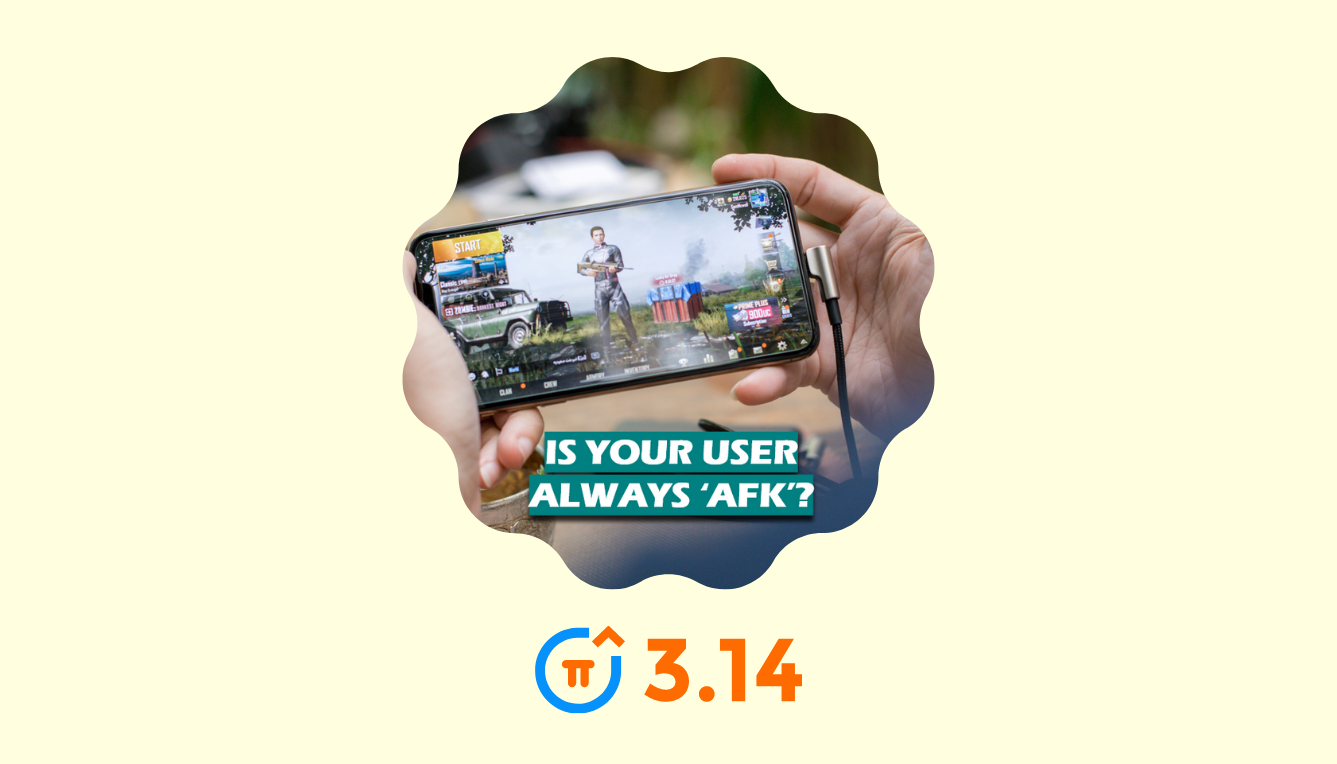Amidst a chaos of more than 480,000 games available to the user to download and play, grabbing the attention of the right user for your app isn’t that simple. According to AppAnnie’s State of the Mobile 2022 Report, mobile game downloads showed a massive growth of 3.03 billion downloads during the pandemic and of course, the right time to act upon this is now. With the mobile gaming sector accounting for $116 Billion worth of ad spend among all other sectors; it has become more significant than ever to show the right ad creatives which have undergone rigorous A/B testing to the right users at the right moment (when they are the most active). Programmatic advertising has become the way to go for most successful gaming companies because of the known fact that it helps deliver the most appropriate ads to potentially high-value users at the right moments. But the real question is, is that enough?
“If your retention is poor then nothing else matters.”
- Brian Balfour, Founder/CEO of Reforge,
Former VP Growth at Hubspot
Rightly said, driving new customers to your mobile game won’t make much difference to the bottom line if retention rates are low. Expanding by 20% over the last year, mobile gaming reaches $116 billion in terms of consumer spend in 2022.
But in a market where 56% of users uninstall an app within 7 days, 44% of mobile gaming companies focus their ad spends on ranking up on their user acquisition thus missing out on what plays a crucial role in bringing out complete efficiency – user retention.
The average for Day 30 retention in the gaming app industry rates is 2-4% which has plummeting from Day 1 of installment, which is unbelievably low and despite a 10% year-on-year decline in retention rates, companies continue to focus on their upper funnel volumes.
However, while we see a majority of gaming companies focus their spending on user acquisition, there are a handful of evolved companies that maintain a fruitful balance between user acquisition and retention strategies. Only around 18% of companies actually focus on a refined retention strategy and see the benefit of an increased Install to Lifetime Engagement rate. So, what are these other benefits that lead to a sustainable growth for companies which you’ve been missing out on? Let’s have a look.
Benefits of investing in App retargeting:
- Rising user acquisition costs:
Don’t we all know that getting a new user is way more expensive than retaining an older one? The reality today is that it costs marketers more money to acquire new users for their app than retain existing users. The cost to acquire a user is 5-10x more expensive than the cost to re-engage a user. The real deal is when you can not only acquire new users for your gaming application but also retain the existing ones or re-engage the inactive ones.
- Positively impacts the stickiness of your app
In a hyper-competitive landscape like gaming, long term success depends on stickiness. Of course, it's the dynamics of the game that is the defining factor of how likely you are to retain your users, but there's nothing stopping a competitor from building a similar (or better) app and stealing all your users from you. Retargeting your users will ensure your game stays top of the mind, improve loyalty, retention, and ultimately lead to more paying users.
- Avoiding the churn trap
Retention strategies are usually built by answering questions like who the user is, which category of games do they play and what motivates them to play which enables companies to capture the most valuable users for their applications.
Gaming apps show only 20 to 30% Day 1 retention rates. This percentage falls to 4 to 7% on Day 7 and 2 to 4% on Day 30. Clearly, acquiring new players is a part of a process. Without a user retention strategy in place, advertisers are compromising on their ROI. With such low retention rates by Day 28, user churn is at peak for most apps.
Moreover, with increasingly more advanced segmentation tools at their disposal like 3dot14’s audience segmentation feature, marketers can drill down into their app’s unique audience segments to see which users deliver the greatest revenue and which are most likely to churn (The best way to grow your gaming app is to use your audience insights to find new players.), among others. That way, they can avoid overwhelming the wrong users with retargeting ads and focus only on those with the greatest potential.
- Increased monetization and longer LTVs
Amidst the clutter of myriads of apps and their advertisements, it only becomes more crucial to remind the user of your app in order to entice them back. Retargeting campaigns also boost engagement by reminding users of the perks of playing, granting them timely offers, or showcasing in-app purchases that would allow them to progress in the game. The options are endless. Retaining users also unlocks monetization opportunities and prolongs the players’ lifetime value. Finding the best balance between acquisition and re-engagement is easy to achieve while working with the right programmatic partner.
The best programmatic campaign for your mobile game is the one that is being consistently optimized and evolving based on your app’s performance and business goals. Tracking CPI, CPA, and ROAS goals are relevant but must be coupled with measuring the campaigns’ uplift on retention and LTV-driven KPIs. Combining different metrics and measuring real uplift provides a more accurate picture of how well your campaigns drive incremental revenue, how valuable your users are, and how they progress down your funnel.
How to up your user retention game:
Some crucial metrics to assess first, include:
- Session Frequency: How often do users play your game, and for how long?
- Retention: How effective is your game design at getting players to keep coming back?
- Progression Funnels: How far do users get before they stop playing?
- In-App Purchase (IAP) Conversion Rates: What drives users to buy?
- Feature Engagement: Which features do users love, and which do they ignore?
Moving forward, let us understand what measures we can take:
- Understand how users navigate across the app. This insight will help refine new user onboarding, new feature adoption, and identify friction points in their UX and will thus drive customer loyalty and a profitable LTV.
- Track user cohorts and identify user trends, analyse churn, run effective win back campaigns and in-app events with delayed results to hold the interest of players.
- Make sure you use deep links in your UA campaigns, and deliver a seamless onboarding experience so that users are taken directly to the content they are most interested in viewing. The goal is to streamline the customer journey, moving the user from advertisement to install to conversion with ease.
- Invest in consistent and value-driven programmatic re-engagement campaigns which are tailored to the user, beginning within a week of the install and continuing throughout the customer’s lifecycle. 90% of app users who engage with an app, at least, once a week are more likely to be long-term users. In today’s privacy-centric reality.
- Sending reminder notifications at different times to understand when the customer is more active. Also helps build a sense of urgency or excitement, thus encouraging users to visit the app and play for the next level of achievement. A unique notification ringtone may also help in better brand recall. The messages can be personalised.
- The most effective in-game ad strategy pairs good user experience with an effective rewarding system. Offering your players high-value rewards can keep them engaged for a longer period of time, incentivizing them to come back and continue playing your game. Feeding the reward loop is both an art and a science that requires testing.
- Implementing ad monetization as a native part of the in-game experience can not only help drive revenue, but also result in higher retention, with users welcoming the chance to engage with ads to keep playing in the game.
Apps utilizing remarketing as an ad strategy significantly increases retention, share of paying users, and average revenue per paying user. Remarketing campaigns are most effective when paired with push notifications, email marketing, and social media marketing to re-engage with your paying users off-platform. Thus, getting high results across all KPIs will require combined efforts across mediums.

